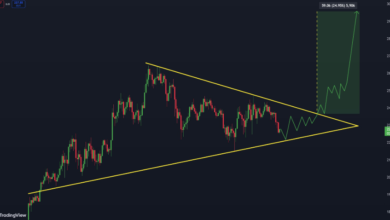From Machines to Intelligence: The Role of Industrial IoT in Predictive Operations

In the industrial sector, relying on traditional machinery is no longer enough. Companies that fail to harness the power of connected, intelligent systems risk falling behind. The Industrial Internet of Things (IIoT) is reshaping operations, turning reactive maintenance into predictive, data-driven decision-making. This shift is a strategic necessity for businesses looking to boost efficiency, cut costs, and stay ahead in a competitive market.
Partnering with a trusted industrial IoT solutions provider can make this transformation seamless, helping organizations implement connected systems that optimize performance and drive smarter operational decisions.
In this blog, we’ll explore how Industrial IoT is transforming operations, enabling predictive maintenance, and unlocking proactive management of industrial assets.
Understanding Industrial IoT and Predictive Operations
Industrial IoT refers to networks of interconnected sensors, devices, and machinery within industrial environments. These devices continuously collect data, from temperature, vibration, and pressure to more complex performance metrics.
By transmitting this information in real-time, IIoT systems provide an unprecedented level of visibility into equipment health and production processes.
Predictive operations take this data a step further. Instead of reacting to equipment failures after they occur, predictive analytics uses historical and real-time data to forecast potential issues.
Machine learning algorithms detect anomalies or patterns that suggest wear, inefficiencies, or potential breakdowns. Businesses can then schedule maintenance proactively, prevent failures, and optimize production schedules.
The result? Smarter, more resilient operations that anticipate problems before they happen.
The Benefits of IIoT-Driven Predictive Operations
The integration of IIoT into industrial operations offers multiple advantages, each directly impacting profitability, productivity, and safety.
1. Minimized Downtime
Unexpected equipment failures can disrupt production, delay deliveries, and inflate costs. With IIoT sensors providing real-time insights, maintenance teams can identify potential issues before they escalate.
Studies by Deloitte show that predictive maintenance can increase equipment uptime by 20% and reduce overall maintenance planning time by 50%, ensuring operations remain stable and consistent.
2. Cost Efficiency
Traditional maintenance models often involve routine inspections or emergency repairs. Predictive operations reduce these costs by focusing efforts only where necessary. Companies save money on spare parts, labor, and production losses while extending the lifespan of critical assets.
3. Enhanced Equipment Lifespan
Continuous monitoring helps identify stress points and wear patterns early. By addressing these proactively, companies can avoid irreversible damage to machinery, resulting in longer service life and better return on investment.
4. Improved Safety
Industrial environments can be hazardous. IIoT systems detect potential malfunctions, overheating, or unsafe conditions that pose risks to workers. Predictive alerts allow safety teams to intervene before accidents occur, creating a safer, more compliant workplace.
5. Operational Efficiency and Optimization
Data-driven insights help refine workflows, optimize machine utilization, and eliminate bottlenecks. With predictive operations, businesses can plan production schedules intelligently, streamline inventory management, and enhance overall operational efficiency.
Real-World Applications of Industrial IoT in Predictive Maintenance
Several industries are already harnessing the power of IIoT to improve their operations:
- Manufacturing
Smart factories utilize sensors on machinery to monitor vibration, temperature, and performance. For instance, if a motor shows unusual vibration patterns, predictive algorithms flag it for maintenance before a breakdown occurs.
- Energy
Power plants and renewable energy facilities rely on turbines, transformers, and generators. IIoT devices monitor these systems continuously, predicting potential failures and enabling timely maintenance. This ensures consistent energy output and minimizes costly unplanned outages.
- Transportation and Logistics
Fleet operators use IIoT to track vehicle performance in real-time. Sensors monitor engine health, fuel efficiency, and brake conditions. Predictive maintenance prevents breakdowns, minimizing delivery delays and reducing fuel waste.
- Healthcare
Hospitals and medical device companies leverage IIoT to monitor critical equipment like ventilators, MRI machines, and lab instruments. Predictive alerts ensure uninterrupted service, reduce downtime, and improve patient safety.
- Supply Chain and Warehousing
Automated warehouses rely on sensors in conveyor belts, robotics, and inventory systems. Predictive maintenance ensures these systems run smoothly, avoiding costly operational halts and ensuring on-time delivery.
Why Businesses Need an Industrial IoT Solutions Provider
Implementing IIoT is not just about installing sensors; it’s about creating an intelligent ecosystem where data drives decisions. Selecting a capable industrial IoT solutions provider is critical to success. Here’s why:
- Expertise Across Domains
A proficient provider brings extensive experience deploying IIoT across industries. They understand the unique challenges in manufacturing, logistics, energy, and healthcare, ensuring solutions are tailored for maximum impact.
- Customization for Business Needs
Every operation is unique. The right provider evaluates workflows, machinery, and data requirements to design a system that aligns with your operational goals.
- Scalability and Flexibility
Businesses evolve, and so should IIoT systems. A competent provider ensures that the solution can handle increased data volumes, integrate with new machinery, and adapt to changing business processes.
- Continuous Support and Optimization
IIoT ecosystems require ongoing monitoring, software updates, and fine-tuning. A dedicated solutions provider offers continuous support, ensuring the system remains efficient and secure over time.
- Accelerating Digital Transformation
Beyond sensors and analytics, IIoT is a gateway to broader digital transformation. A strategic provider can integrate AI, machine learning, cloud infrastructure, and analytics to provide a holistic approach, enabling smarter decision-making across the enterprise.
Key Considerations for Implementing Predictive Operations
Before adopting IIoT at scale, companies should address a few critical factors:
- Data Quality and Integration: Predictive analytics relies on accurate, high-quality data. Integrating sensors, legacy systems, and production software seamlessly ensures that insights are reliable.
- Cybersecurity: Industrial systems are increasingly connected, making them vulnerable to cyber threats. Security protocols, encryption, and network segmentation are essential to protect sensitive operational data.
- Workforce Readiness: Employees must be trained to interact with IIoT systems effectively. Understanding predictive alerts, dashboards, and automated workflows ensures the workforce can leverage the technology fully.
- Cost vs. ROI: While IIoT implementation requires investment, the long-term savings from reduced downtime, extended equipment life, and improved efficiency typically outweigh upfront costs. ROI evaluation helps prioritize high-impact areas first.
The Future of Industrial Operations with IIoT
The future of IIoT lies in intelligent autonomy and sustainability. As connectivity deepens, we’ll see:
- Autonomous Operations: Machines that self-adjust in real-time, reducing the need for human intervention.
- AI-Driven Decision-Making: Combining predictive analytics with AI for fully automated optimization.
- Edge Computing: Real-time processing at the device level for faster decision-making and reduced latency.
- Sustainable Operations: IoT systems track energy use and emissions, helping industries meet green targets while reducing costs.
According to Fortune Business Insights, the global IIoT market is projected to reach $4,062.34 billion by 2032, growing at a CAGR of over 24.3%. This surge underscores how integral connected intelligence is becoming to industrial success.
Conclusion
The evolution from machines to intelligent systems marks a defining shift in industrial operations. By embracing IIoT and predictive maintenance, companies can prevent costly downtime, improve safety, and foster a culture of proactive management.
Partnering with an experienced industrial IoT solutions provider can accelerate this journey, from connected sensors to AI-driven insights, helping businesses unlock new levels of efficiency, sustainability, and innovation.





